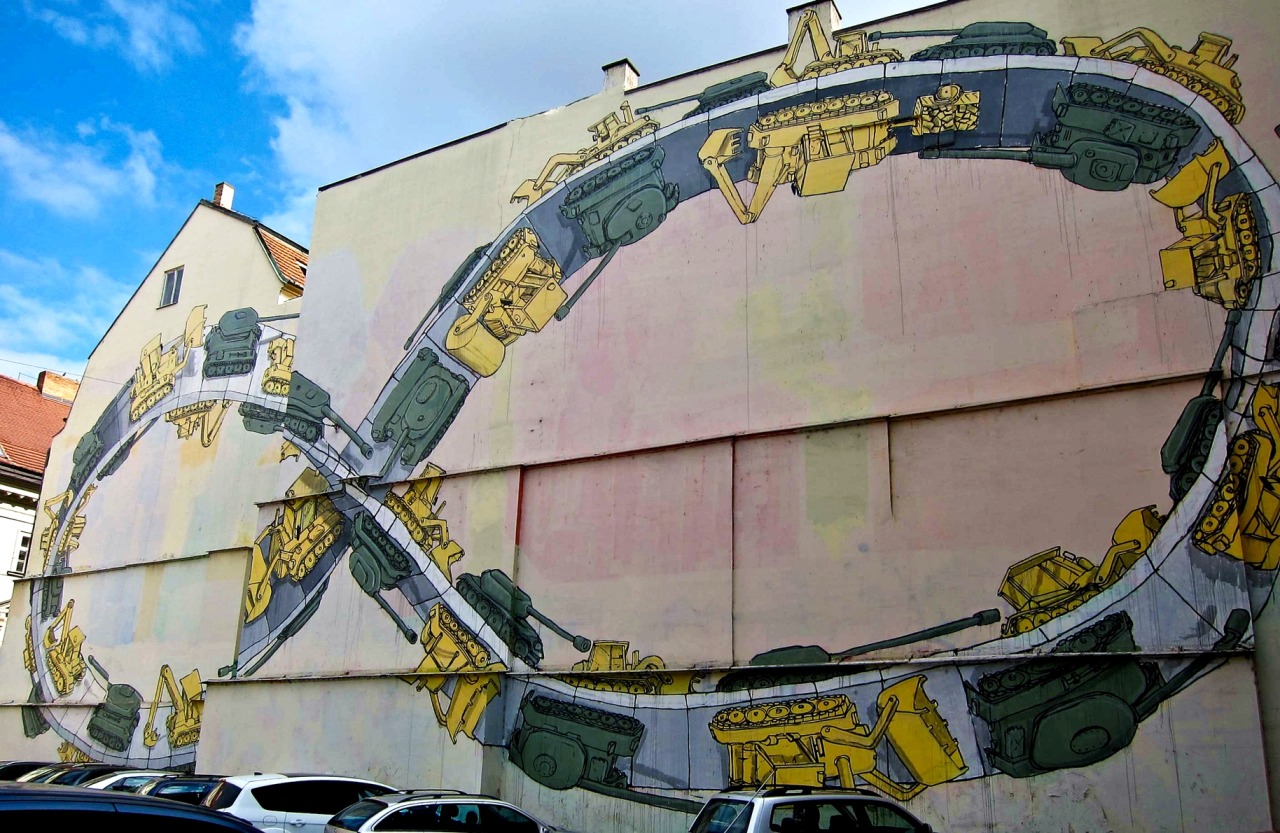Reality isn’t a Rubik’s Cube – it can never be solved or ‘made right’! We can project what we imagine to be ‘right’ upon it, and then try to achieve it, but to do this (or to attempt to do this) is always to get involved in a tangled hierarchy, a deceptive loop of logic that we can’t ever get out of.
What we’re doing here – totally unbeknownst to ourselves – is creating a construct and then living entirely within this construct as if it weren’t a construct, as if it were ‘the actual genuine world’. This is what we inevitably do every time we treat the world (or reality) as a problem that we need to somehow ‘set right’.
Theoretically – or so it seems to us – we stand every chance of being able to do this – it seems to us as if ‘setting everything right’ is a genuine bona fide possibility. When we act upon this possibility, in the attempt to realise it, we pass over imperceptibly into what seems to be the real world but which is actually a ‘virtual domain’ – the virtual domain which is predicated (or premised) upon a strange loop that we can’t see to be strange, a tangled loop that we can’t see to be tangled.
We don’t see the self-contradiction that the strange loop embodies, the self-contradiction which is expressed topologically as a mobius strip (which is where what appears to be two surface is in reality only the one surface with a ‘twist’ in it). This creates the illusion of progress, the illusion of change, where there is none. This is just another way of talking about the self-contradictoriness that is inherent in all Finite Games, therefore.
Because we operating within a domain that is inherently glitched – so that ‘positive’ secretly means ‘negative’ and ‘up’ secretly means ‘down’, etc – we are in the position of always (or almost always) perceiving it to be the case that we are getting somewhere when we’re not. It doesn’t take too much imagination to realise that what we’re looking at here is a perfect recipe for the ultimate invisible prison.
On the one hand we could say that we create this invisible prison for ourselves by treating reality as ‘a problem to be fixed’ rather than respecting / acknowledging it for what it is. What’s happening here – as we’ve said – is that we’re chasing this solution called ‘getting it right’ (or ‘obtaining the goal’) as if it actually exists out there in the real world when the truth is that it’s nothing more than our own un-owned projection. And on the other hand, we could say that we create the invisible prison for ourselves by treating reality as it were something that can be described, something that can be known.
These are two complementary ways of talking about the same thing – we can’t attempt to control something without first describing it to ourselves. How would we know in which way we should attempt to control (whatever it is we want to control) if we can’t describe it to ourselves, if we don’t have a model or theory for it? This is what lies at the very heart of the ‘problem’, therefore – the fact that we can’t see that our descriptions, our models, our theories are all our own projections. They are ‘all to do with us’ and nothing whatsoever to do with what’s really out there. We’re involved in a private (and very meaningless) game, in other words.
In order to ‘stay free from the prison,’ therefore, we have to refrain from projecting our own meaning on the world; we have to refrain from projecting our own meaning on the world because it isn’t really ‘meaning’ at all. What it is, on the contrary, is a doorway to endless delusion, endless confusion, endless grinding futility. The meaning that we perceive (and which goes on to create the subjective world that we live in) is ‘our own thing’, our own doing, our own construct, and when we treat it as if it isn’t (as if it had its own independent, genuine reality) then we bring a curse down upon our heads – we incur a paradox that we just can’t see.
Image – nightcafe.studio






